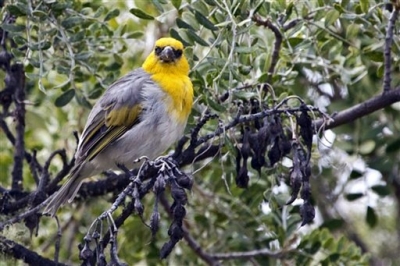
Palila birds are native to Hawaii. Also called Hawaiian finches, they have a bright yellow head and breast. They exclusively feed on the toxic seeds of the mamane plant, but how they remain unaffected by the poison is a puzzle.
Introduced species—plants and animals imported from other parts of the world—are the six-inch bird’s main problem. Escaped domestic sheep and mouflon sheep, brought as sport for hunters in the 1960s, have proliferated and destroy mamane saplings and trees. These non-native animals are a major factor in the Palila’s decline.
Non-native cats and mongooses, which eat eggs and nestlings, are another problem for the Palila. Palila are highly susceptible to non-native mosquito-borne diseases, and climate change is expected to increase transmission within their remaining habitat.
The Palila was one of the first species federally listed as Endangered in 1967. There are still only about 1,000 Palila in existence, so the species was included on the 2014 Watch List.
Credit : American Bird Conservancy
Picture Credit : Google




